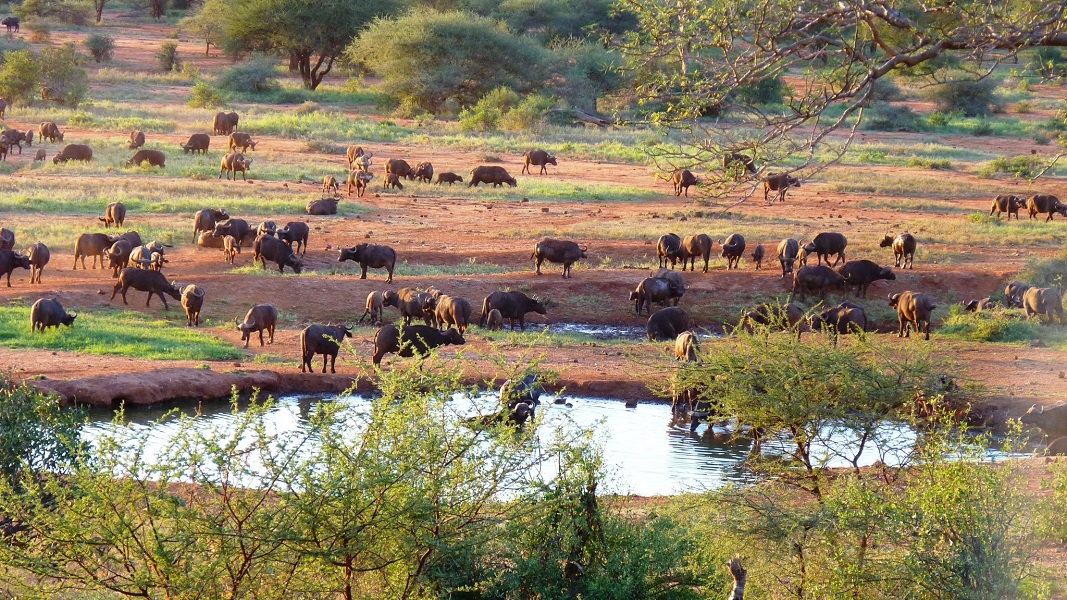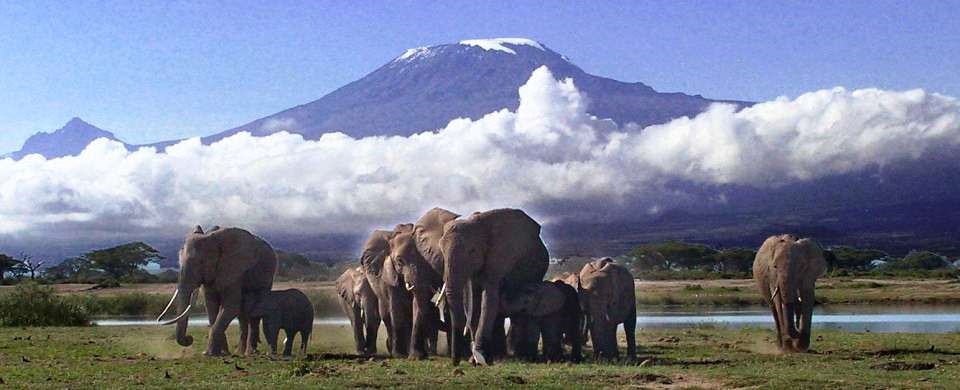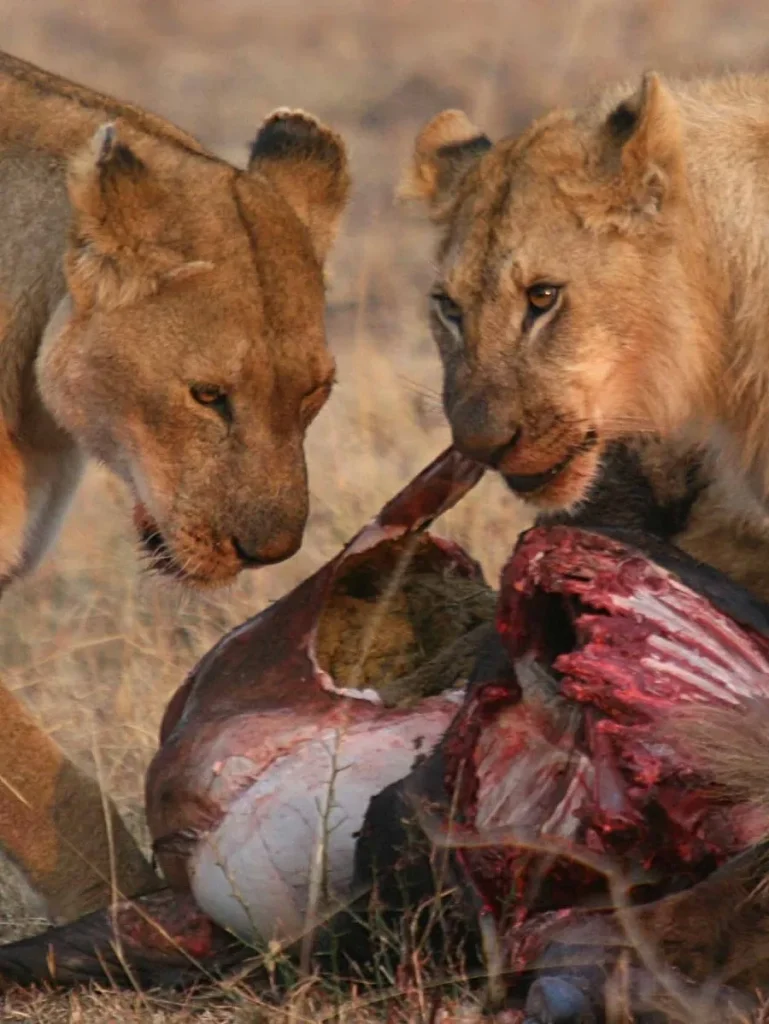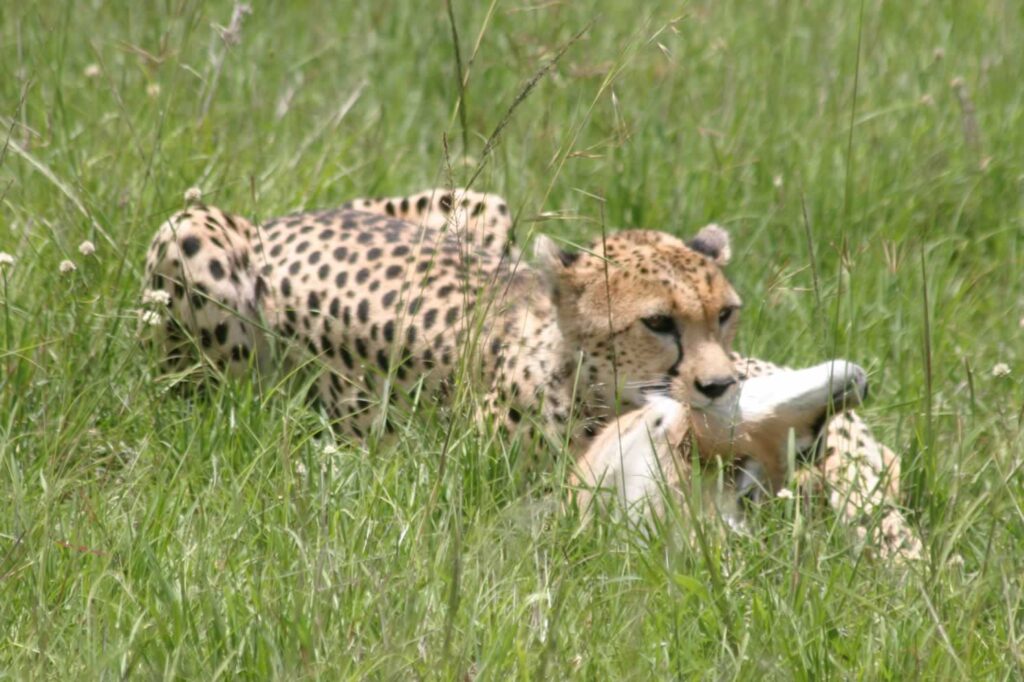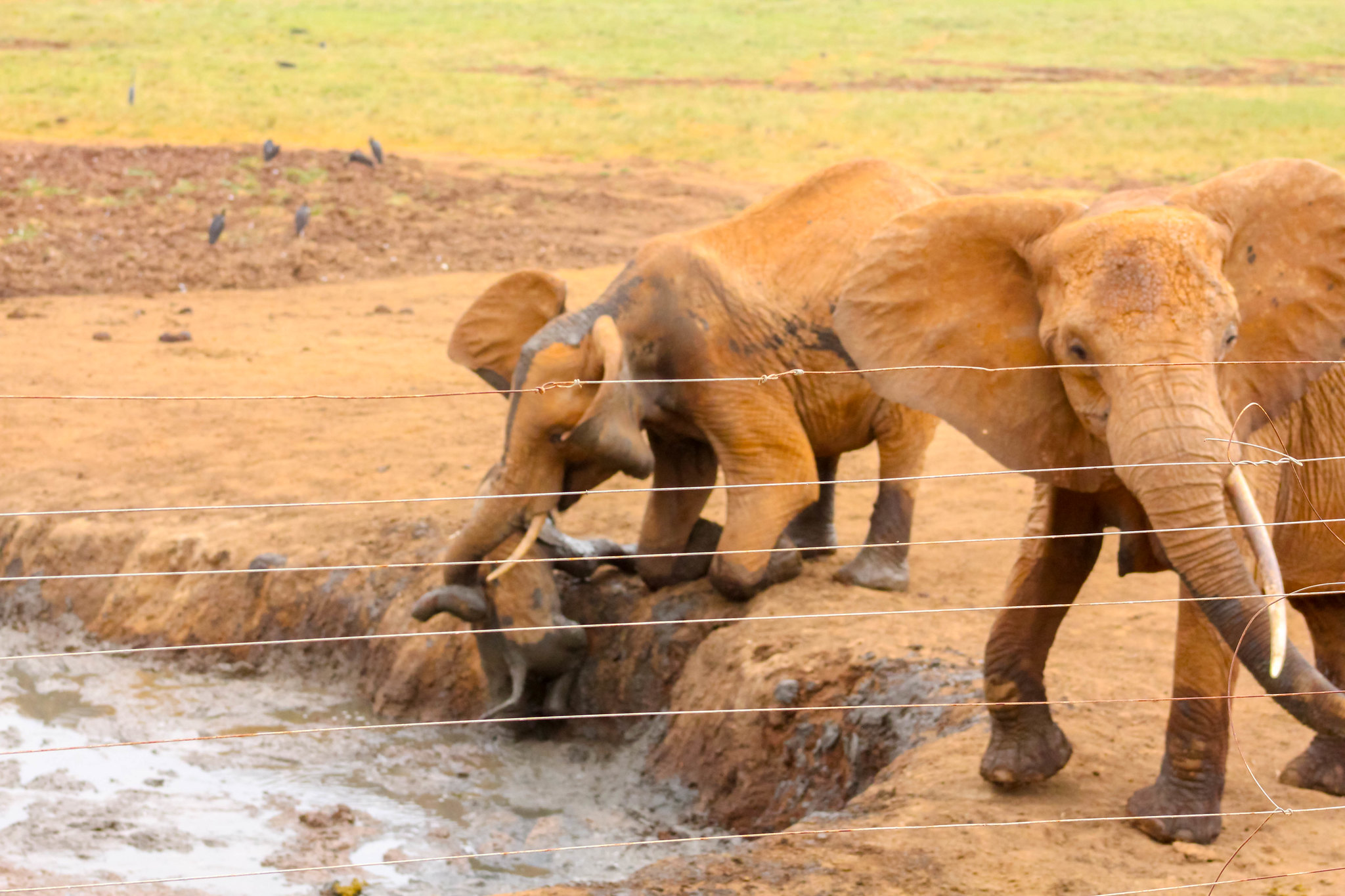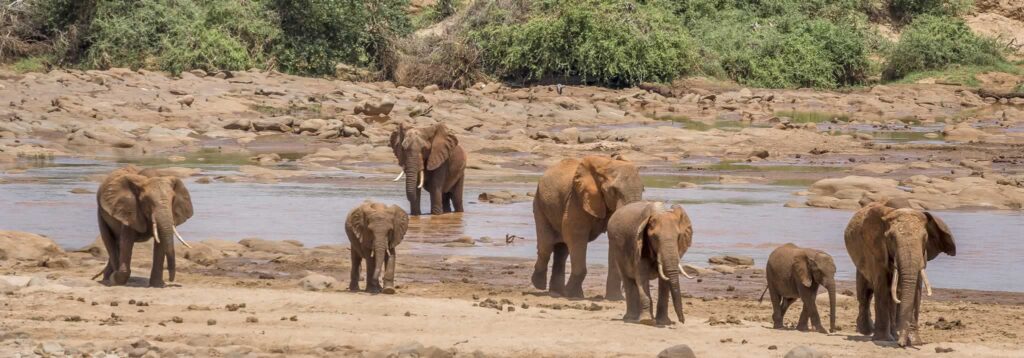Tsavo East
You can’t talk about a Kenyan Safari without the name Tsavo coming up. The Tsavo, as it is commonly named, is Kenya’s largest national park. It’s also one of the biggest national parks in the world. The reserve covers almost 22,000 sq. Km and is located between Nairobi and Mombasa. Divided into Tsavo East and West, the wilderness reserve offers everything, including an extensive river system, savannah and woodlands. The twin parks are some of the must-see attractions when visiting Kenya.
When most people hear ‘Tsavo,’ they think of the infamous ‘Man-Eaters of Tsavo.’ One of the most retold adventure tales ever, chronicles how two lions terrorised the workers building the railway that cuts through the Tsavo. Before the man-eaters were shot, they had killed 135 (allegedly) people. However, the park’s name goes back further than the events of the early 20th century. The Akamba people named the wilderness reserve ‘Tsavo,’ (slaughter) when they settled in the region almost five centuries ago.
The completed railway from Mombasa to Kisumu separated the Tsavo into the East and West sections.
Tsavo East National Park
Tsavo East is considered the better of the twin parks because it has plenty to offer. The wilderness stretches 13,747 sq. Km in what was formerly the Taru Desert. Opened in 1948, the national park is one of the oldest in Kenya. It is located in Taita-Taveta County, near Voi Town, previously in the Coast Province.
The park sits on semi-arid land, covered in savannah and grasslands. Inside the park, visitors have a lot to look forward to. The Galana River, which is a result of the Tsavo and Athi rivers converging, offers relief to the wildlife and stunning views. Then there is the Yatta Plateau, a 300 Km-long lava flow, the longest in the world. It adds to the uniqueness of this protected region. The ridge formed when the lava flow solidified creates an idyllic setting for picnicking as you watch a gorgeous sunset.
Lugard Falls is another attraction worth seeing while in the park. Take a minute to marvel at the white water rapids and maybe catch a crocodile wandering in the pools. The Aruba Dam is one of the best places to game view in Tsavo East. The 85-hectare artificial dam, built in 1952, is on the river Voi’s north bank. It creates a reservoir that attracts many animals and birds. The Mudanda Rock is another vantage spot where you are bound to see an elephant herd, especially during the dry season. The 1.6 Km of stratified rock rests on top of a natural dam, acting as a water catchment.
Of course, the real value of the Tsavo East National Park is the wildlife. The wilderness is home to a variety of species. Expect to see the larger mammals at this park, most notably, lions, elephants, rhinos and leopards. Watching red-dust elephants taking a dip in the azure waters of the Galana is one of the best things you will see at the Tsavo, or anywhere. The thorny scrubland sets the perfect background for an authentic safari.
Besides the big five, Tsavo East offers an array of other mammals, such as the African wildcat, Egyptian mongoose, impala, striped hyena and Coke’s hartebeest.
Bird watchers get their share of attractions, as well. The national park has over 500 recorded bird species. They range from small to big birds. Some examples include weaver birds, kestrels and hornbills.
Apart from game viewing and bird watching, Tsavo East National Park is ideal for trekking and camping. The park is suitable to visit all year round. Access is through Voi Gate, Manyani Gate, Sala Gate and Buchuma Gate.

